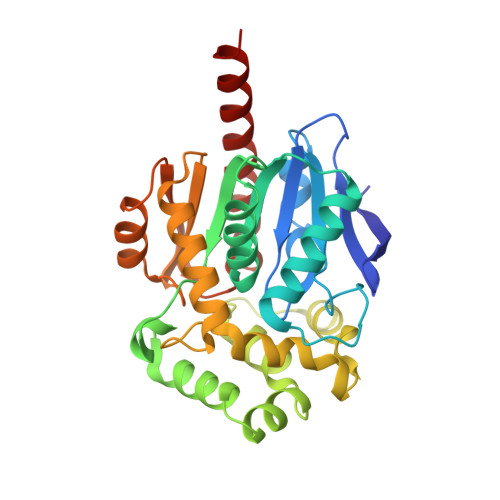Structural and functional analysis of a novel haloalkane dehalogenase with two halide-binding sites.
Chaloupkova, R., Prudnikova, T., Rezacova, P., Prokop, Z., Koudelakova, T., Daniel, L., Brezovsky, J., Ikeda-Ohtsubo, W., Sato, Y., Kuty, M., Nagata, Y., Kuta Smatanova, I., Damborsky, J.(2014) Acta Crystallogr D Biol Crystallogr 70: 1884-1897
- PubMed: 25004965
- DOI: https://doi.org/10.1107/S1399004714009018
- Primary Citation of Related Structures:
4K2A - PubMed Abstract:
The crystal structure of the novel haloalkane dehalogenase DbeA from Bradyrhizobium elkanii USDA94 revealed the presence of two chloride ions buried in the protein interior. The first halide-binding site is involved in substrate binding and is present in all structurally characterized haloalkane dehalogenases. The second halide-binding site is unique to DbeA. To elucidate the role of the second halide-binding site in enzyme functionality, a two-point mutant lacking this site was constructed and characterized. These substitutions resulted in a shift in the substrate-specificity class and were accompanied by a decrease in enzyme activity, stability and the elimination of substrate inhibition. The changes in enzyme catalytic activity were attributed to deceleration of the rate-limiting hydrolytic step mediated by the lower basicity of the catalytic histidine.
- Loschmidt Laboratories, Department of Experimental Biology and Research Centre for Toxic Compounds in the Environment RECETOX, Masaryk University, 625 00 Brno, Czech Republic.
Organizational Affiliation:


















